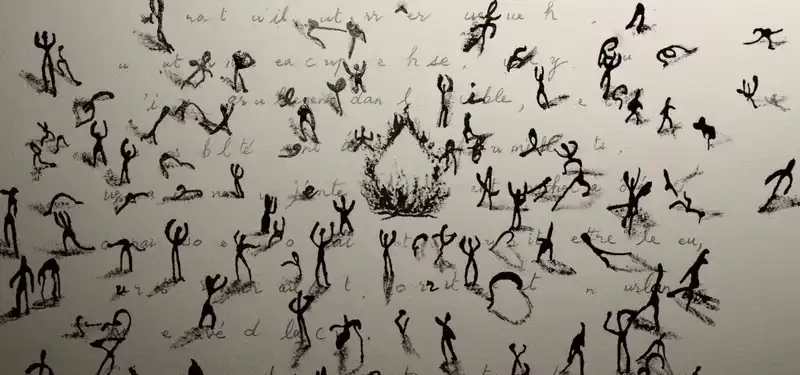Oct 18, 2023
2024 Academy Award® Contender for Best Short Film: “Miserable Miracle” by Ryo Orikasa
Welcome to Cartoon Brew's spotlight series highlighting animated short films that have qualified for the 2024 Academy Awards. There are several ways for a film to qualify for an award. In this edition, we will focus on films that have won an Oscar-eligible award at a festival that is eligible for the Academy Awards.
Today's short film is “Miserable Miracle” by Ryo Orikasa of Japan. The Japanese-French-Canadian co-production won the Grand Prix at this year's Ottawa International Animated Film Festival and qualified for an Academy Award.
“Miserable Miracle” is an animated adaptation of the book of the same name by Henri Michaux (1956). The work pushes the limits of language and perception, linking sound, meaning, form, and movement. In this short film, as the narrator reads the author's words, lines of text from the book fill the screen, vibrate, and deform, causing individual letters to break or become stick figures.
Cartoon Brew: How did Orikasa-san first encounter Michaux's writing and what was your initial reaction to his work? About 15 years ago, I happened upon a book by Henri Michaux in a used bookstore in Tokyo and was struck by the evocative power of his writing and the surreal imagery. At the same time, I was strongly surprised and moved by the author's observation of strange situations, but also by the calmness of his writing style and the way they coexist.
What attracted you to this story and concept, and what made you decide to direct this film? The film depicts surreal scenes, incredible violence, and disasters. In an abstract way, I have the intuition that we cannot use ordinary language to think about disasters; we have to reinvent language. In Henri Michaux's original text, the word “anopodokotolotopadnodrome” appears. I think I was asking myself to create a new language so that these particular words could be accepted as universal.
What did you learn about the production side, the filmmaking side, the creative side, or the subject matter through the experience of making this film? In a way, I spent five years reading a single text, and as time went on, it became more difficult to read because I found so many meanings and images in a single word. Just like in real life, we are expected to deal with misunderstandings and conflicts.
This was my first experience working with a crew, albeit a small one. There were moments of freedom and a more open production. Instead of following the director's instructions to create a single image as a team, each team member acted in his or her own way, and the image emerged as a result. This may be more important than the film itself.
The very analog and classical technique of pencil and ink on paper maintains the connection and intimacy between the image and the physical sensations and emotions that create it. In this project, the paper size used (by us) varied seamlessly from about 3 cm to 40 cm in each scene. This was due to the need for a material and physical rather than a visual approach. In other words, the disaster to be depicted was not an object of objective observation, but rather an object of the active, physical experience that produced it.




Post your comment